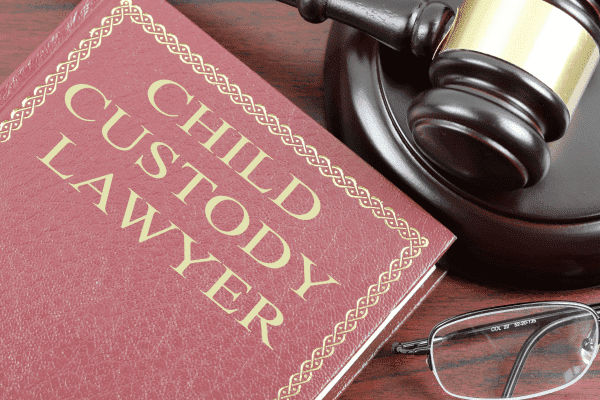Navigating child custody laws in Australia can be daunting, especially when you’re already dealing with the emotional stress of separation or divorce. This guide aims to provide a comprehensive overview of child custody laws in Australia, covering essential topics and answering common questions to help you understand your rights and responsibilities.
Introduction
Child custody laws in Australia focus on the best interests of the child, ensuring their safety, welfare, and development. Understanding these laws is crucial for parents going through separation or divorce to make informed decisions and ensure the best outcomes for their children.
Types of Child Custody in Australia
Legal Custody
Legal custody refers to the right to make significant decisions about the child’s life, such as their education, health care, and religious upbringing. Both parents can share legal custody, even if the child lives primarily with one parent.
Physical Custody
Physical custody involves the child’s day-to-day living arrangements. The child may live with one parent full-time or split time between both parents’ homes.
Joint Custody
Joint custody, or shared custody, means both parents share legal and/or physical custody of the child. This arrangement ensures the child maintains strong relationships with both parents and can involve various living arrangements.
Sole Custody
Sole custody means one parent has exclusive legal and/or physical custody of the child. This arrangement is typically considered when one parent is deemed unfit or unable to care for the child properly.
Factors Considered in Child Custody Decisions
Best Interests of the Child
The primary consideration in custody decisions is the child’s best interests. This includes their physical and emotional needs, safety, and overall well-being. The court evaluates several factors to determine what arrangement best serves the child’s interests.
Parental Capability
The court assesses each parent’s ability to care for the child. This includes their mental and physical health, financial stability, and parenting skills. The aim is to ensure the child is in a supportive and nurturing environment.
Child’s Wishes
Depending on the child’s age and maturity, their preferences may be considered. While not decisive, the child’s wishes can influence the final custody arrangement if they are old enough to express a reasoned preference.
History of Family Violence
A history of family violence significantly impacts custody decisions. The court prioritizes the child’s safety, and any evidence of violence or abuse will be a crucial factor in determining custody.
Legal Process for Determining Child Custody
Family Court
The Family Court of Australia handles most custody disputes. The court can issue orders about where the child will live, how much time they will spend with each parent, and other aspects of their care.
Mediation
Mediation is often the first step in resolving custody disputes. It allows parents to negotiate and reach an agreement outside of court, which can be less stressful and more amicable. Mediation services are provided by the Family Relationship Centres and other organizations.
Court Orders
If mediation fails, the court can issue binding orders regarding custody arrangements. These orders can be interim (temporary) or final, depending on the case’s circumstances.
Modifying Child Custody Orders
Grounds for Modification
Circumstances can change, and so may the needs of the child or parents. Common reasons for modifying custody orders include significant changes in the child’s needs, a parent’s relocation, or evidence of a parent’s inability to provide proper care.
Process of Modification
To modify a custody order, the requesting parent must demonstrate a substantial change in circumstances since the original order was made. The court will reassess the situation and decide based on the child’s best interests.
FAQs About Child Custody in Australia
What is the difference between joint and sole custody?
Joint custody involves both parents sharing legal and/or physical custody, promoting active involvement in the child’s life. Sole custody means one parent has exclusive custody, with the other parent typically having visitation rights.
How does the court decide who gets custody?
The court considers various factors, including the child’s best interests, each parent’s capability, the child’s wishes, and any history of family violence. The goal is to ensure the child’s well-being and stable development.
Can a child choose which parent to live with?
The court may consider the child’s wishes if they are of sufficient age and maturity to express a reasoned preference. However, the final decision is based on the child’s best interests.
What if one parent wants to move interstate or overseas?
If a parent wishes to relocate, they must seek the court’s permission or obtain consent from the other parent. The court will consider the impact of the move on the child’s relationship with both parents and their overall well-being.
How can I get full custody of my child?
To obtain full custody, you must demonstrate to the court that it is in the child’s best interests. This may involve providing evidence of the other parent’s inability to care for the child or showing that the child’s needs are best met by living primarily with you.
Conclusion
Understanding child custody laws in Australia is essential for ensuring the best outcomes for your children during separation or divorce. By focusing on the best interests of the child and seeking legal advice when necessary, parents can navigate the complexities of custody arrangements more effectively.
YOU MIGHT ALSO LIKE: Understanding Child Custody Laws in Australia (Ensure the Best for Your Child)

1 thought on “Understanding Child Custody Laws in Australia: A Complete Guide 2024”